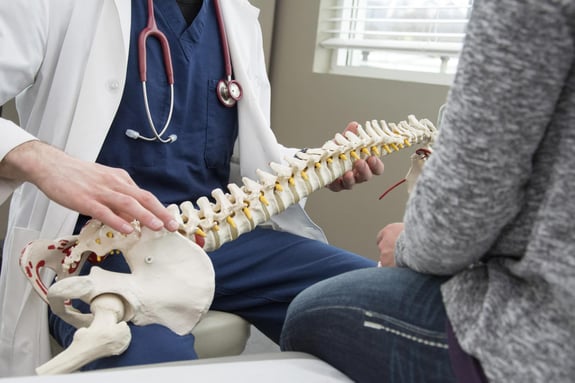
Imaging Insights Delivered
Current diagnostic technology doesn't provide all vital information necessary to support quality decisions regarding spine surgery and treatment options. We can help improve patient outcomes by providing vital diagnostic and decision-making tools that are missing from today’s technology.
Detecting Spinal Instability
20+ million "static" x-rays are ordered each year in the United States alone and unfortunately, they are inherently limited in providing quantifiable information. Functional imaging is the new standard for diagnosing spinal instability.
Standard imaging does not allow for consideration of overall spine biomechanics, including sagittal alignment. Current imaging reports do not provide all the vital information necessary to support quality spine treatment decisions, and aren't standardized, leading to inconsistencies and variability in reporting.
Address the limitations with existing imaging and radiological reporting to better guide your treatment decisions.
Profile-ESP is a Full Spine Quantitative Data Analysis Platform is an analytics and reporting service offering standardized, comprehensive spinal motion and alignment data in a graphical, easy-to-read report. It provides full spine alignment data, plus motion (angulation and translation) and disc height data at each spine level. This easy to use, easy to adopt system requires no capital investment.'
- Offers better diagnostic information (60+ metrics for each patient!) to treat your patients and facilitate insurance approvals
- Integrates directly with your existing PACS system
- No equipment needed, adopt into your regular diagnostic workflow

Analyze and diagnose your patients spinal instabilities and alignment with consistency, precision, and accuracy.
The VMA® utilizes fluoroscopy imaging with proprietary equipment and software to assess spinal instability and sagittal alignment, addressing the limitations of traditional bending x-rays of the spine. VMA testing assists patients through a complete spine bend, reducing the variations that can arise from natural "guarding" that often occurs when they are in pain, helping to assure instability does not go undetected.
- Detects instability at higher rates
- Helps address insurance denials
- Easy to integrate into clinical workflow


“With this report I have the information immediately calculated. If I need to start thinking surgically, I know it right away.”


